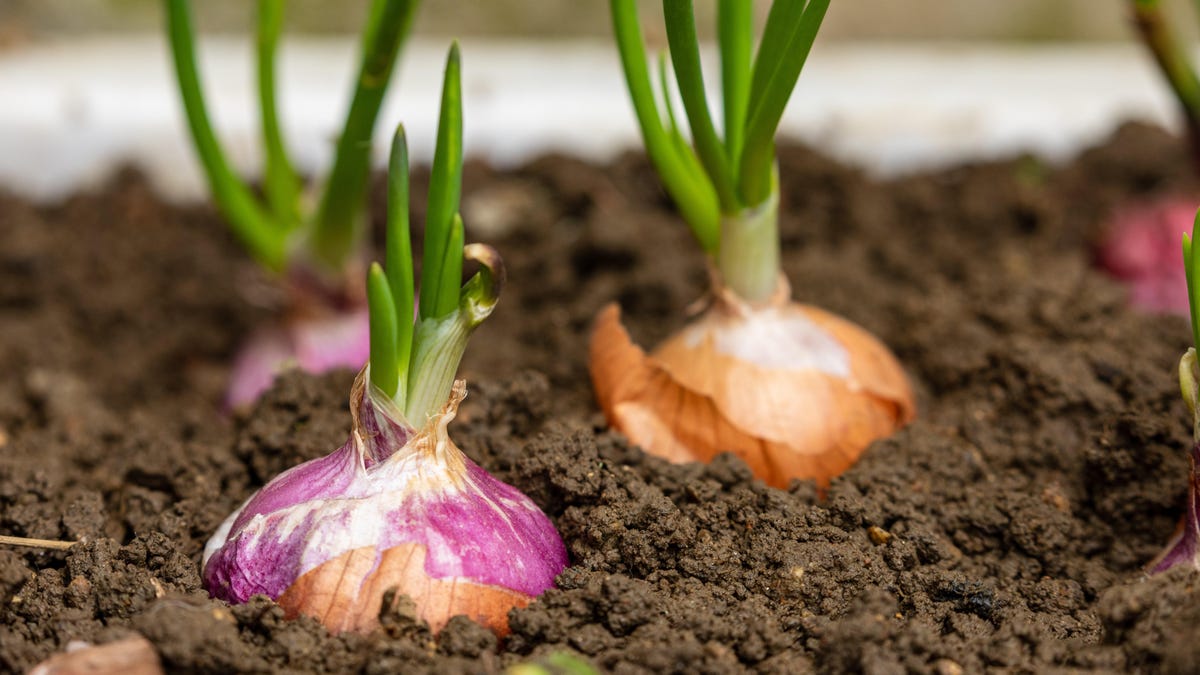Plant These Vegetables This Fall to Harvest Next Spring.

Autumn in the garden is often seen as the time to harvest and lay down for the winter. In areas where temperatures drop below freezing in winter, one would think that nothing could be grown during the winter months. This is only partly true: you won’t be able to harvest anything in the coldest months, but you will likely be able to plant some crops in the fall that will be harvestable in the spring. Here’s what you need to know for a successful early spring harvest.
The best time for autumn garden
When considering when to set up a fall garden, you should aim for a period when the temperature is between 50 and 60°F. Cool weather is fine, but don’t plant the plants in the ground if the temperature is below freezing for more than a night.
Onions , garlic, and shallots can be planted in the fall and will produce next year’s crop in the summer. These plants take some time to mature and can survive the winter using only their root system. Because they don’t germinate until spring, you should label your plants carefully so you don’t accidentally plant anything else on top of them. For these plants, use mulch to suppress weeds, and make sure the soil is well fertilized with bone meal or bulb fertilizer to prepare the ground for a good harvest next year.
Onions are one of the longest-lived root vegetables, ripening within nine or ten months. They are also perennials, like all onions, so they will continue to produce for as long as you want them to. Onions are planted with so-called “nets” – smaller bulbs grown in the previous season. This gives them an advantage early in the growing season and makes them more resilient in colder conditions. You will be able to tell when the onions are ready to harvest by looking at the base of the green where the bulbs turn yellow or darken, depending on the onion variety.
Leeks can be planted from seed in the fall and will sprout in the spring. They should be spaced about six inches apart. Although leeks are not planted from bulbs, they still require four to six inches of mulch to successfully overwinter. Seeds should be planted around the same time you plant onion sets in your yard, and leek plants will be ready to be harvested after about six or seven months in the ground. A mature leek will be three-quarters to one and a half inches in diameter at the base.
Garlic is similar to onions, except that it will begin to turn white at the base of the green when it is ready to be harvested. Since garlic grows in clusters, you can separate the cloves and plant them, like a flower bulb, with the root down and the pointed end up. You can buy garlic kits or use last year’s cloves. Garlic bulbs can be harvested in the summer, but many varieties will also start producing greens or shoots that can be harvested in the spring.
To get a faster harvest, you can try growing shallots . They stick together like garlic but are more like onions and are often considered somewhere in between. Shallots will be ready in early or late spring, depending on when you plant them and how long the cold season lasts. You will know they are ready to come out of the ground when the base of the green begins to darken.
If you just can’t wait for the bulbs to be harvested and cured, you can plant the onions in bunches for the earliest spring harvest. These onions are usually grown for their greens, although there are no rules against eating the bulbs, and you can harvest them as soon as the greens are about half an inch in diameter or about six inches high.